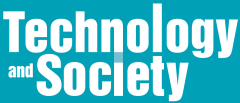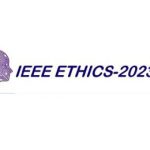When you actively participate in an area in which you are “passion-driven,” others notice, and opportunities will open for you. For young people, I suggest
find your passion, volunteer, and get involved.



When you actively participate in an area in which you are “passion-driven,” others notice, and opportunities will open for you. For young people, I suggest
find your passion, volunteer, and get involved.

Young people’s unique understandings and perspectives are often not considered in debates and discussions around privacy and security. This article outlines a youth-centric notion of digital privacy and guiding principles around privacy developed by young people from Antigua and Barbuda, Australia, Ghana, and Slovenia.

Technology has always been about more than simply a route to increased productivity and economic growth; technology also provides the opportunity to enhance, enrich, and empower—basically, to improve shared qualitative values or people’s quality of life (however that is measured). On the flip side, technology also provides the opportunity to develop and project organizational control, which itself can be weaponized to quantitatively determine human value as an asset to that organization, or to reinforce asymmetric power relationships.

From the social unity of Ubuntu to the socially ingrained dispositions of habitus, our authors helped us to perceive the value of intentionally weaving together threads of history to shape the present and future social fabric of humanity.

Stefan Höhne dives into a wealth of letters—correspondence sent to the New York City Transit Authority in the period 1955–1968.

Professor Katina Michael of Arizona State University in the School for the Future of Innovation in Society discusses ChatGPT and its implications. From The List Show TV.

In Data Feminism, authors Catherine D’Ignazio and Lauren F. Klein do not merely deal with data. They pair data with feminism. Here, feminism is deployed as a “shorthand for the diverse and wide-ranging projects that name and challenge sexism and other forces of oppression, as well as those which seek to create more just, equitable, and livable futures.”

Good Pictures is about the advice given to photographers—mostly amateurs—on the techniques they should use to improve their work. Of course, the advice is intimately tied to technological developments in photography as well as the desire of camera makers to sell new products.

We would act wisely if we turn to alternative ways of thinking, other wisdom traditions, and learn from them. Ubuntu philosophy can help to draw attention to social issues, for example, the horrors of colonialism, exclusion, and oppression, and to find ways to promote social justice. Aboriginal wisdom can help to apply diverse ways of knowing, for example, knowledge that is related to place, to kinship, to stories, to patterns—not only knowledge in books. The Indigenous cultures and wisdom of the Americas can teach us how to organize economic and political systems more sustainably and to develop more caring relationships with nature. And Confucian culture and wisdom can help to design and apply technologies in ways that support us as relational and developmental beings.

While it is true that technology is addressing problems and making elements of some people’s lives easier, there are aggregate measures that suggest a troubling trajectory.

PeaceTech is “the movement to use technology to end violent conflict and extremism.”

Scholars critique physical infrastructure approaches as ineffective because flooding routinely exceeds defense structures and disaster assistance and removes the incentive for property owners to reduce their risk. As an educational and engagement tool, the flood resilience challenge (FRC) game aims to build the capacity of stakeholders to improve flood resilience and enhance flood risk governance, including collective decision-making.

IEEE ETHICS-2023: Ethics in the Global Innovation Helix – Call for Papers – DEADLINE EXTENDED: Poster Abstracts and Full Draft Papers (short length and regular length) due January 13, 2023

In this time of massive growth in the scale and scope of technological innovations, it is more important than ever to look critically at the nature of these innovations and to challenge a naïve, techno-utopian attitude that innovation is synonymous with progress.

People around the world are increasingly holding corporations accountable for their practices and seeking ways to rectify their unequal distribution of the risks and benefits among differently positioned populations.

Call for Papers – ISTAS23 – Submission deadline March 1, 2023 – “Technology and Analytics for Global Development”. 13-15 September 2023, Swansea University, Swansea, Wales

Organizations are gaining awareness that digital products and services targeted at the children’s market segment need to go beyond adopting the “mindset” of a child. Rather, it is necessary to actually invite children to participate in the design process.

“Securitization for Sustainability of People and Place: A Call to Transdisciplinarity”
The Fifteenth Workshop on the Social Implications of National Security (SINS22

The call for responsible innovation is a call to address and account for technology’s short- and long-term impacts within social, political, environmental, and cultural domains. Technological stewardship stands as a commitment to anticipate and mitigate technology’s potential for disruption and especially harm and to guide innovation toward beneficial ends. Dialogue and collaboration across diverse perspectives is essential for developing actionable technological solutions that attend in responsible ways to the evolving needs of society.

The IEEE Workshop on Electronics for mitigating Climate Change (EmC2) will be a place to discuss issues arising by climate change such as the risk of passing a tipping point of planetary boundaries if we do not accelerate the path to reduce GHG emissions.